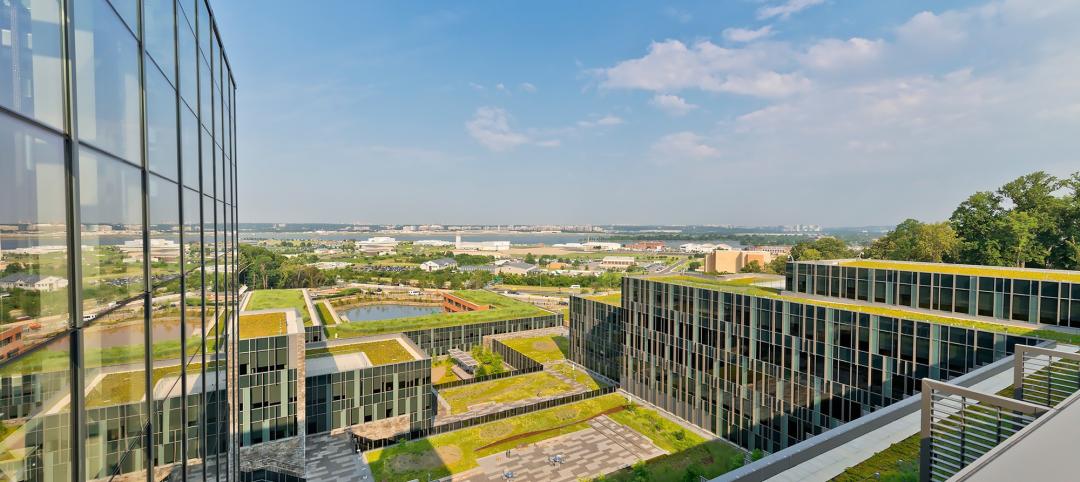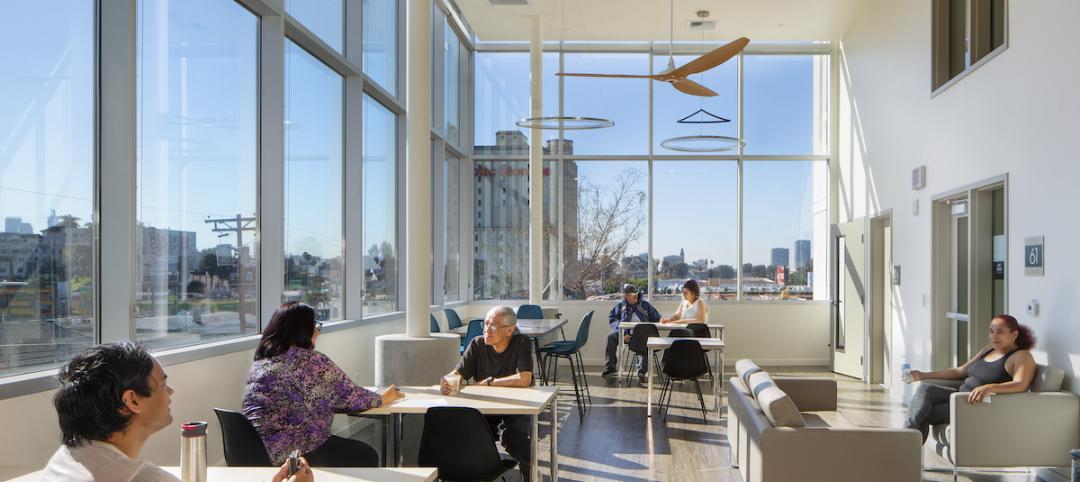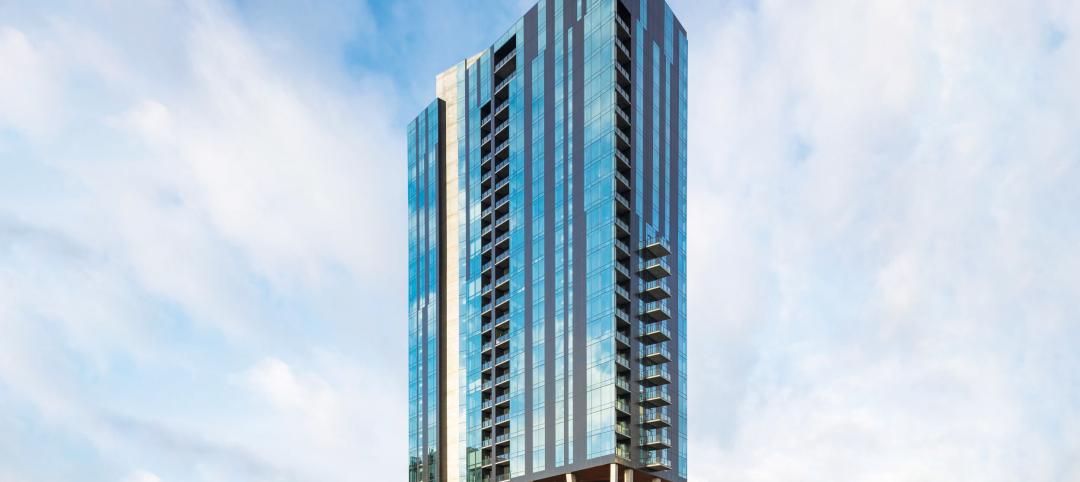Last November, the International Code Council launched the Alliance for National & Community Resilience for the purpose of developing a whole community benchmark rating system by 2018. The alliance’s members include such heavy hitters as Target and Kaiser Permanente.
Two months earlier, the American Society of Landscape Architects launched an online guide for resilient landscape planning and design to help communities protect themselves from natural disasters. Nancy Somerville, the trade group’s CEO, says ASLA convened a panel of experts—including scientists, policy makers, and landscape architects—to produce policy recommendations that ASLA intends to release sometime next year.
These are examples of an array of guidelines and standards coming from all kinds of sources that are jockeying for position to stamp their imprint on resilience best practices and, potentially, new codes.
“There are an increasing number of standards around resilience that AEC firms need to be prepared for,” says Katharine Burgess, Senior Director of Urban Resilience with the Urban Land Institute. ULI is providing resilience assistance to cities, communities, and its members through a variety of programs.
 The 56-story 181 Fremont Tower, a LEED Platinum office/apartment tower in San Francisco, is the first to be built on the West Coast to meet an earthquake rating system devised by Arup, the structural engineer on the project. Heller Manus Architects.
The 56-story 181 Fremont Tower, a LEED Platinum office/apartment tower in San Francisco, is the first to be built on the West Coast to meet an earthquake rating system devised by Arup, the structural engineer on the project. Heller Manus Architects.
BREEAM and the Institute for Sustainable Infrastructure are working on resiliency standards. The American Society of Civil Engineers is crafting standards for adaptive redesign. The Insurance Institute of Business and Home Safety recently launched a rating system, Fortified Commercial, as a companion to its Fortified Home standard. IBHS has written full sets of standards for construction in markets susceptible to hurricanes, high winds, and hail.
Some AEC firms use their own resilience measurement tools. Arup created a framework and rating system for designing earthquake-resilient buildings which it calls Resilience-based Earthquake Design Initiative, or REDi.
Several cities, states, and the federal government either have their own resilience guidelines or are developing them. Degenkolb Engineers has been helping California create seismic retrofit ordinances for various building typologies.
Erica Fischer, PhD, PE, a former Design Engineer with Degenkolb who is now an Assistant Professor at Oregon State University, says these revisions set timelines for buildings to be evaluated and retrofitted. If the owner doesn’t comply, a notice gets posted on the building stating that it doesn’t meet seismic standards.
In November 2015, the U.S. Green Building Council launched a pilot program for resilient construction, with three LEED credits. USGBC ended the program after a year, but the organization’s Resilience Working Group has been attempting to revamp the credits system. Alex Wilson of the Resilient Design Institute, which spearheaded the pilot, says RDI has resubmitted its proposal. He suggests USGBC might be ready to introduce a new resilience credit program at Greenbuild in Boston this November. USGBC’s spokesperson Marisa Long says the council hasn’t set a timetable for the release.
Related Stories
Concrete | Jan 24, 2023
Researchers investigate ancient Roman concrete to make durable, lower carbon mortar
Researchers have turned to an ancient Roman concrete recipe to develop more durable concrete that lasts for centuries and can potentially reduce the carbon impact of the built environment.
Sustainability | Jan 23, 2023
How regenerative design is driving AEC industry innovation
HOK's Sean Quinn and Microsoft's JoAnn Garbin discuss the next step of sustainability: regenerative design.
Multifamily Housing | Jan 19, 2023
Editorial call for Multifamily Affordable Housing project case studies - no cost to submit!
Building Design+Construction will feature a roundup of "Multifamily Affordable Housing" projects on BDCnetwork.com.
Products and Materials | Jan 18, 2023
6 innovative products for multifamily developments
Here are six innovative products for various multifamily developments, including a condominium-wide smart electrical system, heavy-duty aluminum doors, and prefabricated panels.
Adaptive Reuse | Jan 12, 2023
Invest in existing buildings for your university
According to Nick Sillies of GBBN, students are increasingly asking: "How sustainable is your institution?" Reusing existing buildings may help answer that.
Sponsored | Resiliency | Dec 14, 2022
Flood protection: What building owners need to know to protect their properties
This course from Walter P Moore examines numerous flood protection approaches and building owner needs before delving into the flood protection process. Determining the flood resilience of a property can provide a good understanding of risk associated costs.
Green | Dec 9, 2022
Reaching carbon neutrality in building portfolios ranks high for organizations
Reaching carbon neutrality with their building portfolios ranks high in importance among sustainability goals for organizations responding to a Honeywell/Reuters survey of senior executives at 187 large, multinational corporations. Nearly nine in 10 respondents (87%) say that achieving carbon neutrality in their building portfolio is either extremely (58%) or somewhat (29%) important in relation to their overall ESG goals. Only 4% of respondents called it unimportant.
Green | Dec 9, 2022
Newly formed Net Zero Built Environment Council aims to decarbonize the built world
Global management consulting firm McKinsey recently launched the Net Zero Built Environment Council, a cross-sector coalition of industry stakeholders aiming to decarbonize the built world. The council’s chief goal is to collaboratively create new pathways to cut greenhouse gas emissions from buildings.
Adaptive Reuse | Dec 9, 2022
What's old is new: Why you should consider adaptive reuse
While new construction allows for incredible levels of customization, there’s no denying that new buildings can have adverse impacts on the climate, budgets, schedules and even the cultural and historic fabrics of communities.
75 Top Building Products | Nov 30, 2022
75 top building products for 2022
Each year, the Building Design+Construction editorial team evaluates the vast universe of new and updated products, materials, and systems for the U.S. building design and construction market. The best-of-the-best products make up our annual 75 Top Products report.
















